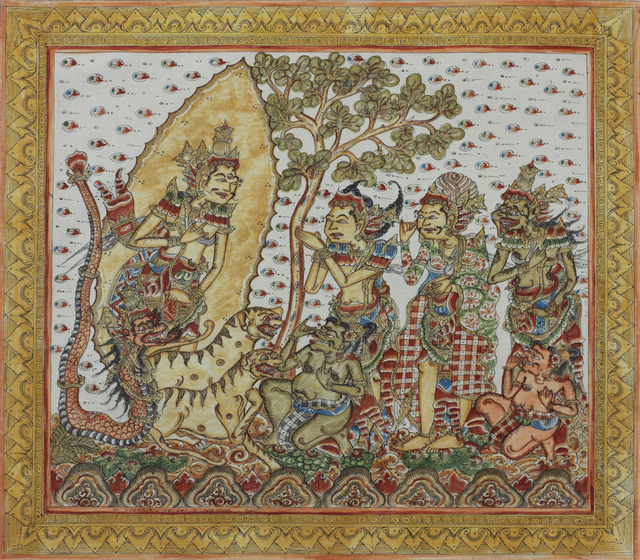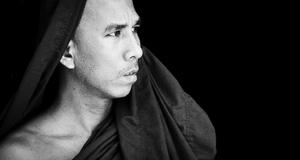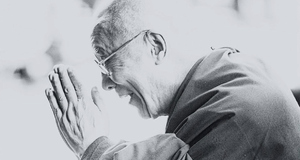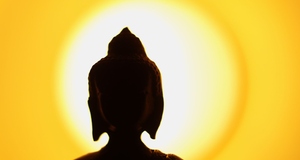Featured Article:The Kakawin Sutasoma: A Look at Bhinneka Tunggal Ika and Perceptions of the Text's Religious Implications
By
2015, Vol. 7 No. 09 | pg. 1/3 | » AbstractThis study is an analysis of the religious aspects of the epic Sutasoma. Written in the 14th century CE during the height of the Majapahit Empire of East Java, this kakawin has raised several questions about its religious orientation, messages, and motives; questions, which, given the religious ambiguity of the time, are extremely difficult to answer. The Sutasoma also contains the famous line, “bhinneka tunggal ika,” which, often translated as “unity in diversity,” has since been adopted as the Indonesian national motto. The context and meaning of this passage has also been heavily contested. This study, therefore, is an attempt to contribute to these ongoing debates. By comparing the works of published scholars with the words of a diverse group of Indonesian individuals, this work explores the various interpretations of the story, its characters, and the “bhinneka tunggal ika” passage. Not only does this work examine the subtleties of the religious aspects of the famous story, it also serves to demonstrate that ancient literature, regardless of its distance from the present day, still remains relevant in modernity. Focusing on the experiences of Sutasoma, several scholars have studied the Sutasoma story and its relevance to Hindu and Buddhist teachings in both Majapahit Java and modern Indonesia. Many questions have been raised concerning the character Sutasoma himself and the implications of the main conflict at the end of the story. While some consider Sutasoma to be an incarnation of Buddha, others simply regard Sutasoma as an admirable leader with noble qualities. Professor Angela Hobart (1990), for example, writes that Balinese dalangs (traditional puppeteers of wayang kulit performances) see Sutasoma as the Buddha, whereas their Sudra audiences do not make the same connection to the deity (p. 88-89). Those who equate Sutasoma to Buddha further interpret the final conflict as a representation of Buddhist superiority over Siwaism or Hinduism. As Professor Zuriati (2010) writes, for example, “for Mpu Tantular [the author of the Sutasoma], Sutasoma and Buddhism are the winners” (p. 423).
Kakawin Sutasoma is an Old Javanese poem in poetic metres (kakawin or kavya). It is the source of the motto of Indonesia, Bhinneka Tunggal Ika, which is usually translated as Unity in Diversity, although literally it means '(Although) in pieces, yet One'... The kakawin teaches religious tolerance, specifically between the Hindu and Buddhist religions. The Kakawin tells the epic story of Lord Sutasoma, and was written by Mpu Tantular in the 14th Century. More from Wikipedia »
These varying interpretations are further complicated by the famous “bhinneka tunggal ika” passage of the Sutasoma. Translated as “unity in diversity” and having since become the national motto of Indonesia, these words represent the “merging of Hinduism and Buddhism into one religious system [in which] … Siwa and Buddha are described as different but essentially one” (Kinney, 2003, 24). How then, can scholars claim the superiority of one religion over the other while simultaneously preaching the importance of “bhinneka tunggal ika”? Given the obscurity of the realities of the religions of the time (discussed in further detail below), it becomes extremely difficult to classify the Sutasoma as strictly Hindu or Buddhist, especially from a scholarly perspective. Add to this the contrasting interpretations of the characters and events of the story, and the picture becomes even more complicated. Depending on an individual’s religious background, exposure to the story, and historical context, perceptions and interpretations of the text begin to vary greatly. Modern reception of the story, therefore, becomes an extremely intriguing study. Those familiar with Hans Robert Jauss’ idea of ‘horizons of expectations’ or Stanley Fish’s theories of ‘interpretive communities’ (discussed in greater depth below) would immediately recognize that it is only natural that individuals of varying backgrounds and experiences would have different outlooks toward the text and consequently interpret it differently. The fact that the articles and books cited in this work all present myriad varieties of interpretations truly speaks to the relevance of these theories. Taking this all into consideration, the present study is an attempt to contribute to the scholarship of modern reception of the Sutasoma story. Focusing on individuals’ interpretations of the Sutasoma itself, its characters, and of the “bhinneka tunggal ika” motto, the study explores the manifestation of Jauss’ and other scholars’ theories in modern reception. Particular attention is paid to the interpretations of dalangs, other artists, and their audiences (who know the Sutasoma within the context of entertainment and story-telling), as well as academic scholars (who know the Sutasoma within the context of literary theory and history) from the Universities of Udayana and Gajah Mada. In short, this study is a comparative study of the responses of individuals with varying ‘horizons of expectations’ to the questions, “How do individuals of varying social and education backgrounds interpret both the character and story of Sutasoma? How are their interpretations affected by their ‘horizons of expectations,’” “does ‘bhinneka tunggal ika’ represent different ideas to different individuals? How do their interpretations differ,” and “what causes individuals to label the Sutasoma as exclusively Hindu or Buddhist.” As Hans Robert Jauss (1970) writes, “in the triangle of author, work and reading public the latter is no passive part, no chain of mere reactions, but even history-making energy. The historical life of a literary work is unthinkable without the active participation of its audience” (p. 8). An analysis of an individual’s reaction to a work of literature therefore is equally important to a study of the text itself. This notion of shifting one’s focus to the audience is a relatively recent scholarly phenomenon. What is called ‘reader-response theory’ arose in the 1970s as a reaction to the formalist interpretations of literature, which strived to be “scientific, focusing on language, structure, diction, irony, paradox, metaphor, and other aspects of the text itself which should be defined objectively […] labeling any attempts to interpret a literary work based on reader’s responses to it as a manifestation of the ‘affective fallacy’” (Martinez, n.d.). Two main schools of thought criticize this objective, formalist approach: the ‘constance school of reception aesthetics,’ which considers a literary work as an effect that must be explained, and the ‘individualist school,’ which focuses on the readers’ different responses and how these responses are affected by their personalities and backgrounds. Jauss, who belongs to this first school of thought, introduces the idea of ‘horizons of expectations,’ which are sets of “historical, cultural, and psychological assumptions collectively shared by texts and readers” (Martinez, n.d.). Wolfgang Iser similarly writes of ‘pre-intentions,’ “expectations that the text elicits from the reader, which were purposefully included by the author.” Stanley Fish, an American theorist belonging to the individualist school, writes that each individual’s interpretation is both subjective and objective; it is subjective because it represents a specific point of view, but it is also objective because the point of view is shared by an ‘interpretive community,’ a group of readers that share the same assumptions and will thus come to a similar consensus (Martinez, n.d.). The writings of these theorists make clear that the study of literature is not limited to an examination of the text itself; individuals’ reactions and interpretations are equally intriguing and require careful analysis. Jauss (1970) writes, A literary work is not an object which stands by itself and which offers the same face to each reader in each period. It is not a monument which reveals its timeless essence in a monologue. It is much more like an orchestration which strikes ever new chords among its readers and which frees the text from the substance of the words and makes it meaningful for the time: ‘words which must, at the same time that they speak to him, create an interlocutor capable of listening.’ (p. 10). In the context of this work, therefore, it is crucial to consider not only the Sutasoma story and its implications, but the diverse interpretations that have developed as a response to the text, as well. By definition, it must be clarified, the Sutasoma is a literary text. A specific author who utilized specific language and meter physically wrote it, and it is categorized within a particular literary genre. If the literary tradition of reading and copying the textual manuscript had continued into modern Indonesian society, these aforementioned theories, which deal with physical works of literature that are read and interpreted – rather than performed and observed – by their audience, would neatly apply to modern reception. This, however, is not the case. As it is discussed in further detail below, the main context in which Indonesians are exposed to the Sutasoma is not through readings of a physical text, but through wayang kulit shadow puppet performances, and very few individuals, unless they are studying the story in an academic setting, have access to a copy of the original text. Thus, the relevance of the above theories to the present study becomes complicated. Using loose definitions of the words ‘text’ and ‘reader,’ however, can resolve this complication. To be necessarily repetitive, the Sutasoma is a ‘text’; the context in which the story is known in present day, however, does little to warrant the use of the word ‘text.’ Nevertheless, because it was indeed a ‘text’ in its original form, in order for the theories to remain applicable, we shall continue to consider the Sutasoma, in both ancient and modern times, a ‘text.’ Similar liberties must be taken with the word ‘reader.’ Even if next to no one now ‘reads’ the text, someone at some point in time naturally must have read it. Individuals who were then introduced to the story via the recollections of these original readers subsequently ‘read,’ or interpreted, these accounts in order to produce their own. Thus we shall consider ‘readers’ to be ‘interpreters,’ whether of a physical text or of an artistic performance of the story. The English language, in fact, lends itself to this denotative license; an entry in the Oxford American Writer’s Thesaurus lists ‘interpret, take, take to mean, construe, see, and understand’ as synonyms for ‘read.’ Adrian Vickers faces similar complications in his work, Journeys of Desire (2005), which explores the various artistic manifestations of the Balinese text Malat. As he writes in his introduction, the “text was more than the manuscripts”; “the Malat spills over from the written word into types of performance and visual representation, […] and the written word makes little sense, or is at least ‘boring,’ unless you understand that it is part of a wider process of representation, linked to notions of genre and to cultural models” (p. 9). He further explains thus: In explaining Balinese definitions of ‘Malat’ it became clear to me that the word was used without assuming that other forms of representation of performance were subordinate to the written word. In other words, there was no sense that dancers or painters should refer back to some original and definitive text that was superior to their own products […] Balinese kept ‘varying,’ ‘fragmenting’ and ‘corrupting’ (to use the European terms) manuscripts because of this interaction, because only fragments filled the needs of providing specific episodes to describe performed stories, or to be sung during rituals. Or more broadly speaking, only fragments spoke to the specific times and places in which they were produced. This fragmentation was, then, a positive experience that kept the Malat alive and rendered it a broad cultural phenomenon, allowing it to serve as political mode, romantic entertainment, an element of ritual and a form of history, not tied to any single function. (p. 9-10) Professor Wallace Bacon (1984) has also written considerably on the relationship between literature and performance. In defining performance theory, he writes, “Our center is in the interaction between readers and texts which enriches, extends, clarifies, and (yes) alters the interior and even the exterior lives of students and performers and audiences through the power of texts” (p. 84). This “power of texts” must not be overlooked or underestimated: To say that both text and performer are of vital importance is not to deny that a study of the art may, at any given time, choose to spend time with one rather than the other. In my own case, I have, in what I have written, spent much time with the text, partly because when I came to the field it seemed to me that the notion of “text” needed exploring in relationship with performance [his italics], and the idea of performance as a way of knowing was new and exciting to me. (p. 356). Bacon also writes of the “process of matching” between the performer and the text, which is not a question of “dominance and submission by either text or performer,” but an ever-changing process that results in a “gradual merging of the two bodies” (p. 356). This matching process leaves the text “unchanged,” but the poem, or text, and the performer become one, “visible and audible,” and the “delicate back-and-forth play between poet, poet-in-the-poem, the language of the text, performer, and performer-in-the-poem combines to produce the unique interpretative event.” The final product is “neither poet nor performer but poem as poem [his italics].” (1980, p. 1). This last statement by Bacon is especially striking and relevant to this study. The text and performance, or in our case, the Sutasoma and the wayang kulit performances, are closely linked in a mutual relationship in which both parts merge to create the final product.Continued on Next Page » Suggested Reading from Inquiries Journal
Inquiries Journal provides undergraduate and graduate students around the world a platform for the wide dissemination of academic work over a range of core disciplines. Representing the work of students from hundreds of institutions around the globe, Inquiries Journal's large database of academic articles is completely free. Learn more | Blog | Submit Latest in Literature |



















